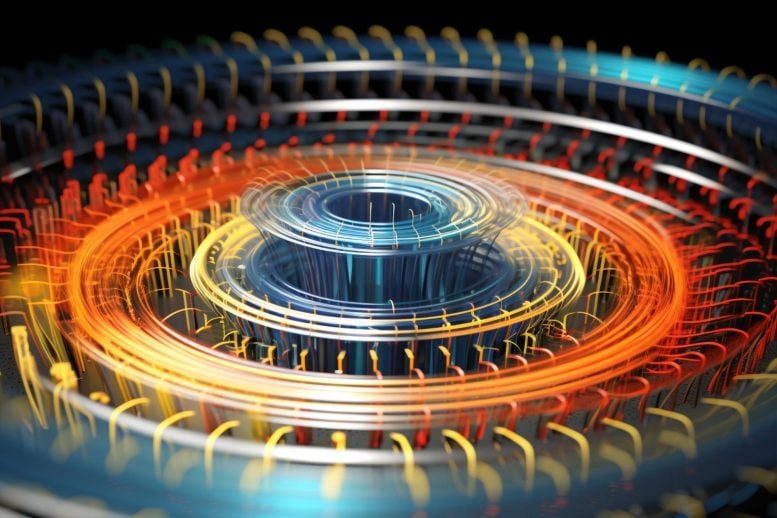
UC Riverside and its partners are exploring antiferromagnetic spintronics, a tech that could unlock lightning-fast, ultra-dense memory and smarter computing through quantum mechanics.
The University of California, Riverside has been awarded nearly $4 million through the UC National Laboratory Fees Research Program to lead a major research initiative in antiferromagnetic spintronics, a promising new approach for advanced memory and computing technologies.
Over the next three years, the project will explore how antiferromagnetic materials – known for their ultrafast, spin-based properties – can be used to push the boundaries of modern microelectronics.
Advancing Microelectronics with Antiferromagnets
“The semiconductor microelectronics industry is looking for new materials, new phenomena, and new mechanisms to sustain technological advances,” said Jing Shi, a distinguished professor of physics and astronomy at UCR and the award’s principal investigator. “With co-principal investigators at UC San Diego, UC Davis, <span class="glossaryLink" aria-describedby="tt" data-cmtooltip="
” data-gt-translate-attributes=”[{"attribute":"data-cmtooltip", "format":"html"}]” tabindex=”0″ role=”link”>UCLA, and Lawrence Livermore National Laboratory, we aim to cement the University of California’s leadership in this area and obtain extramural center and group funding in the near future.”
Spintronics, short for spin-based electronics, uses the quantum property of electron spin, in addition to electric charge, for information processing. Antiferromagnetic spintronics offers a faster, more compact alternative to today’s ferromagnetic-based technologies used in memory chips and hard drives.
What Is Spintronics? A Quick Primer
“With UCR leading this project, we are well positioned to compete nationally for new funding provided by the CHIPS Act,” Shi said. The CHIPS Act provides funding for the Creating Helpful Incentives to Produce Semiconductors (CHIPS) for America Fund to support the domestic production of <span class="glossaryLink" aria-describedby="tt" data-cmtooltip="
” data-gt-translate-attributes=”[{"attribute":"data-cmtooltip", "format":"html"}]” tabindex=”0″ role=”link”>semiconductors.
Shi explained that in ferromagnetic materials, all electron spins align in the same direction, creating a net magnetic moment. In contrast, antiferromagnets have alternating spin directions, resulting in no net magnetic moment. Despite this, the oppositely aligned spin directions can be flipped to represent two distinct states, which can be used for memory storage.
“The advantage of antiferromagnetic memory is higher density, as the lack of a net magnetic moment means neighboring bits don’t interfere with each other,” Shi said. “Additionally, memory writing in antiferromagnets is faster due to quicker spin dynamics, driven by a quantum interaction called exchange interaction.”
Faster, Denser, Smarter Memory Systems
Beyond memory, antiferromagnets also have potential in computing, particularly in “magnetic neural networks.” Special antiferromagnets, called easy-plane antiferromagnets, can carry spin pulses over long distances with minimal energy loss, Shi explained.
“These pulses can propagate information through multiple neural layers, similar to how signals are processed in biological neural networks,” he said. “This is possible because of a quantum state called spin superfluidity, where spin pulses move efficiently through the material without much dissipation.”
Spin Superfluidity and Energy-Efficient Processing
Titled “Antiferromagnetic spintronics for advanced memory and computing,” the project will study these special antiferromagnets and investigate their potential. Researchers will use several lab facilities at UCR as well as those at Lawrence Berkeley National Laboratory and Oak Ridge National Lab. The project will also involve the participation of several postdoctoral researchers and graduate students.
Shi said the proposal’s reviewers assessed the research as high risk and high reward.
“There are many challenges ahead, including innovative approaches for designing and synthesizing materials, but our team has strong expertise in antiferromagnetic material synthesis,” he said. “We are confident we can overcome the challenges.”
The UCR team includes Igor Barsukov, an associate professor of physics and astronomy, and others.
